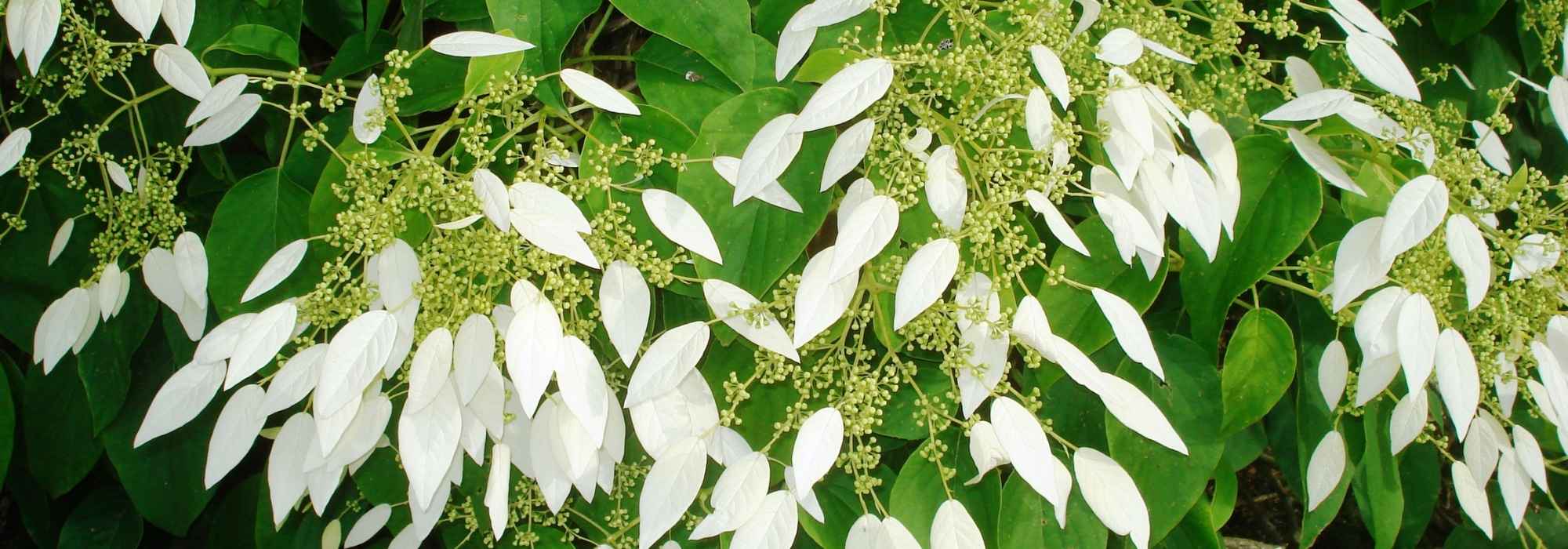
Schizophragma hydrangeoides: planting, cultivation, maintenance
Contents
Schizophragma in a nutshell
- Schizophragma is a climbing plant with beautiful summer flowering, featuring large inflorescences measuring up to 30 cm in diameter.
- Known as ‘Climbing false hydrangea’ or ‘Japanese climbing hydrangea’, it attaches itself to its support without causing damage.
- Its dense foliage is deciduous and takes on beautiful hues in autumn.
- It prefers semi-shaded exposures and cool, humus-bearing soils with an acidic tendency.
- Rather hardy, Schizophragma is ideal for dressing the trunk of a large tree, a wall, or a pergola.
- Its flowering, enhanced by white or pink bracts, is more spectacular and refined than that of its close cousin, Hydrangea petiolaris, with which it is often confused.
- A bit slow to establish, this lesser-known liana requires little maintenance for a spectacular decorative effect.
The word from our expert
The Schizophragma is a beautiful climbing plant valued for its spectacular summer flowering. More than its small flowers, it is the large bracts that surround them that steal the show. They can be ivory white like the type, Schizophragma hydrangeoides, or take on a pink hue in Schizophragma ‘Rose Sensation’. Together, they form fluffy inflorescences measuring 20 to 30 cm in diameter.
Quite close and often confused with Hydrangea petiolaris, this ‘False climbing hydrangea’ offers a more spectacular flowering that can last up to 3 weeks.
The opposite foliage, deciduous to semi-evergreen, is heart-shaped, sometimes dentate and pubescent. It is borne on sturdy, twisted stems. Most species have green foliage, but Schizophragma ‘Moonlight’ features velvety leaves with silver reflections and well-defined veins. Schizophragma ‘Angel Wings’ displays large, rough leaves of a grey-green colour highlighted by darker veins.
The Japanese climbing hydrangea is a rooting liana, equipped with powerful climbing roots that allow it to attach itself to its support without causing damage. It is therefore ideal for climbing up a tree, dressing a cool wall, or festooning a pergola.
Rather hardy, Schizophragmas can withstand temperatures down to -10°C, with some even tolerating lower.
A climbing plant for light shade, Schizophragma prefers non-scorching exposures but a bit of sun, for example in the late afternoon, encourages beautiful flowering.
Thriving in neutral or acidic soil, it requires a fairly rich, humus-bearing substrate that retains moisture while being well-drained.
Description and Botany
“`html
Botanical data
- Latin name Schizophragma sp.
- Family Hydrangeaceae
- Common name Climbing false hydrangea, Japanese climbing hydrangea
- Flowering Summer
- Height 3 to 10 m
- Exposure Partial shade, light shade, non-burning sun
- Soil type cool, humus-bearing, well-drained, acidic to neutral
- Hardiness -10°C to -20°C
The Schizophragma originates from the wooded and humid regions of Asia (Japan, Himalayas, Taiwan). Belonging to the family Hydrangeaceae, like Deutzias and Philadelphus, its closest relative is Hydrangea petiolaris, another climbing hydrangea to which it bears resemblance. However, it is distinguished by a more spectacular flowering with large inflorescences and highly decorative bracts. Introduced to Europe in the late 19th century and awarded by the renowned Royal Horticultural Society for its beauty, it remains a relatively unknown and underutilised plant.
The Schizophragma, also known as ‘Japanese climbing hydrangea’ or ‘climbing false hydrangea’, is a woody climbing plant. It is a rooting liana with twisting branches that clings to its support using aerial roots, but unlike ivy, its climbing roots do not damage the structure. Slow-growing, this climbing hydrangea requires 2 to 3 years to establish properly and needs guidance in its early stages.
There are 4 or 5 species cultivated in gardens. Some do not exceed 4 metres in height such as Schizophragma ‘Moonlight’ or Schizophragma corylifolium. Others, however, are more vigorous and require suitable supports. This is the case for Schizophragma fauriei, the giant of the genus, which can reach nearly 15 m. The spread rarely exceeds 3 to 4 metres.
The false hydrangea produces main branches that grow vertically. Along these main stems, lateral branches are produced that bear the inflorescences. Between May and August, and for nearly 3 weeks, numerous small flowers appear at the tips of the branches, in flattened cymes. Fertile and melliferous, they are highly appreciated by pollinating insects. This climber primarily attracts attention with its large bracts that surround the flowers. Carried by long petioles, elongated and pointed in shape, they seem to float around the plant. In the wind, these ‘tears’ create the impression that a swarm of butterflies has taken over the area. The inflorescences then dry and remain decorative until winter.
Mostly ivory white, the bracts delicately tint pink in one variety, Schizophragma ‘Rose Sensation’, sometimes marketed under the name ‘Roseum’.

Inflorescences of False Hydrangeas: Schizophragma hydrangeoides, S. hydrangeoides ‘Rose Sensation’ and S. integrifolia
Schizophragma integrifolia is perhaps the most spectacular with its white inflorescences, larger (up to 30 cm) and more graceful.
Slow to establish, Schizophragmas may not flower in the first 2 or 3 years but once they start, they charm more each year.
With dense vegetation, the Schizophragma displays opposite, heart-shaped leaves. Sometimes pubescent and with slightly dentate edges.
The deciduous to semi-evergreen foliage is of a more or less intense green, except for Schizophragma ‘Moonlight’ which reflects silvery hues highlighting the darker veins. It also takes on beautiful autumn colours and adorns itself with a lovely dark red.
Schizophragma ‘Angel Wings’ is also distinguished by foliage tinged with grey.
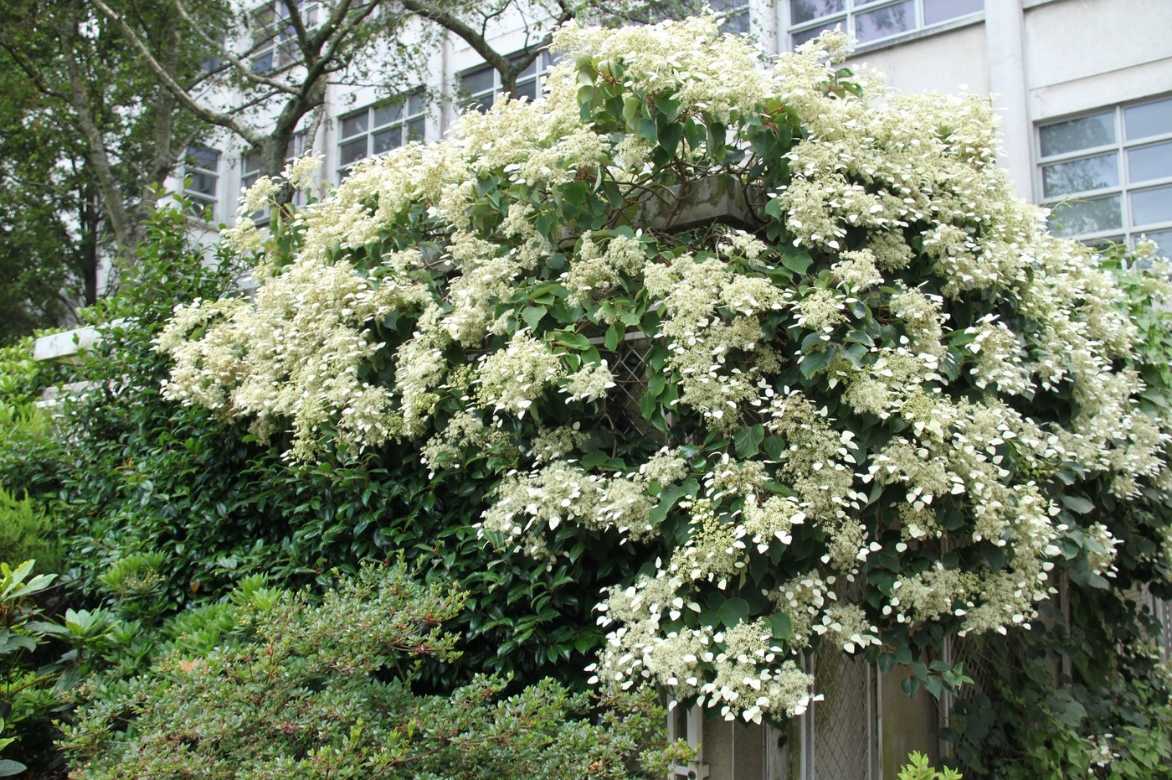
All Schizophragmas prefer fairly fertile soils, rich in humus, cool but well-drained. They accept neutral soils but show a preference for slightly acidic soils. They can grow in heavier, clayey soils as long as water does not stagnate during the bad season.
As a woodland liana, it is in partial shade or light shade that the flowering of the false hydrangea is most beautiful. It tolerates denser shade but is more discreet there. A sunny exposure is possible as long as it is not burning (avoid south-facing walls) and the soil retains good moisture.
The Schizophragma is very resistant to diseases but its young shoots may attract slugs and snails. Natural control methods exist, and this risk is mainly for young plants. Aphids may also take up residence in the plant but do not pose a threat. In case of a significant infestation, discover how to limit their presence.
“`
The different varieties of Schizophragmas
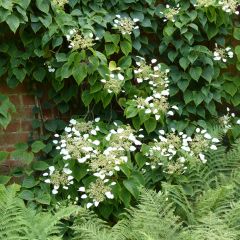
Schizophragma hydrangeoides
- Flowering time July to September
- Height at maturity 10 m
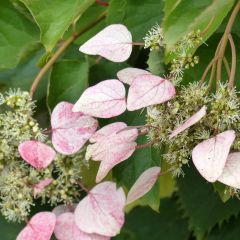
Schizophragma hydrangeoides Rose Sensation
- Flowering time July, August
- Height at maturity 6 m
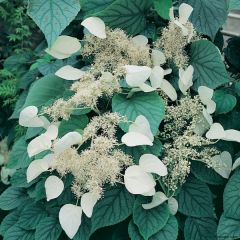
Schizophragma hydrangeoïdes Moonlight
- Flowering time July, August
- Height at maturity 4 m
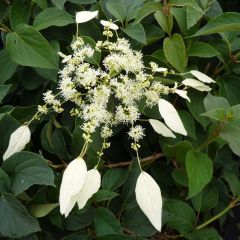
Schizophragma hydrangeoides Windmills
- Flowering time July to September
- Height at maturity 5 m
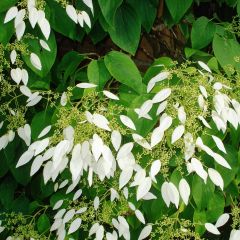
Schizophragma integrifolium
- Flowering time July to September
- Height at maturity 8 m
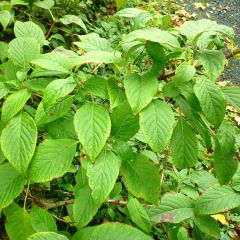
Schizophragma corylifolium
- Flowering time June to August
- Height at maturity 4 m
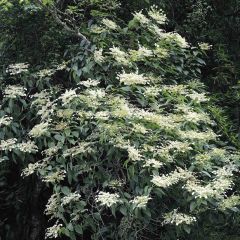
Schizophragma fauriei
- Flowering time August, September
- Height at maturity 15 m
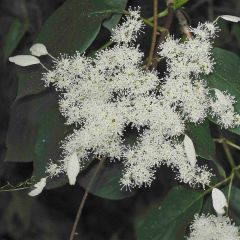
Schizophragma fauriei Angel Wings
- Flowering time August, September
- Height at maturity 15 m
Discover other Schizophragma
View all →Available in 0 sizes
Available in 1 sizes
Available in 1 sizes
Available in 2 sizes
Available in 1 sizes
Available in 1 sizes
Available in 1 sizes
Available in 1 sizes
Available in 2 sizes
Available in 1 sizes
Where, when, and how to plant Schizophragmas?
“`html
Where to plant?
Schizophragmas thrive in bright to partially shaded situations where light promotes their flowering. In the cooler regions north of the Loire, planting in full sun is possible. Further south, a north-facing exposure is a viable option.
Plant your ‘Climbing hydrangea’ in rich, deep, humus-bearing soil. It prefers slightly acidic soils but will tolerate neutral soils. If necessary, add heather soil or turf, along with compost, to which you can add ground horn. In all cases, avoid calcareous soils.
While it can withstand occasional dry spells once established, prefer a soil that remains moist but not waterlogged, especially in winter.
The Japanese climbing hydrangea is a liana. It needs a support to cling to. Install it on the trunk of a deciduous tree or in a spot where the shade is not too dense, let it climb up a wall, allow it to festoon a suitably sized pergola, or wrap a garden shed in its delicate flowering.
On a terrace or large balcony, place your Schizophragma in a suitably sized pot (minimum 50 cm in all dimensions) and use it to mask a wall or climb a trellis.
In all cases, Schizophragma is slow to establish. Expect 2 to 3 years before it really takes off (and starts to flower). To assist it, and before it can cling on its own, guide and stake its branches.
Once well established, its growth accelerates and its flowering becomes more generous each year.
When to plant?
Plant your Schizophragma ideally in autumn, when the soil is still warm and seasonal rains ensure the necessary moisture. Spring planting is also possible; in this case, remember to water regularly if the weather is dry.
How to plant?
Planting in the ground:
1. Start by
2. Ideally, dig a hole 2 to 3 times the width of the root ball and about fifty centimetres deep. Adjust the planting distance according to the chosen support:
– Plant at the base of a post if you are climbing your Schizophragma on a pergola, for example.
– If the support is a tree, find a pocket of soil between two large roots, about fifty centimetres from the trunk. Dig carefully to avoid damaging the large roots and cleanly cut the smaller ones with pruning shears. When placing it, make sure to orient the plant at an angle towards the trunk.
– Against a wall, the presence of a potential eaves may deprive the plant of all or part of the rainwater. In this case, widen the planting hole to mitigate this issue (or regularly check the soil moisture!).
3. Install a layer of gravel at the bottom of the hole, about 5 cm thick to ensure good drainage.
4. Optionally place a stake in the planting hole and orient it towards the support to help the liana cling. After 2 or 3 years, it will manage on its own.
5. Mix the excavated soil with quality potting soil or heather soil, and a scoop of well-matured compost. Add a handful of ground horn to nourish the plant over the long term.
6. Remove the root ball from its pot and place it in the hole, filling in with the mixture.
7. Lightly compact and form a basin to help water reach the roots.
8. Water generously to ensure the soil adheres well to the roots.
9. Secure the main branches to the stake using soft ties and without strangling the shoots.
10. Mulch the base using dead leaves, dried grass clippings, RCW (Ramial Chipped Wood) or commercial mulches (flax shavings, buckwheat or coconut husks, pine bark…). A thickness of several centimetres ensures good moisture retention at the base of the plant.
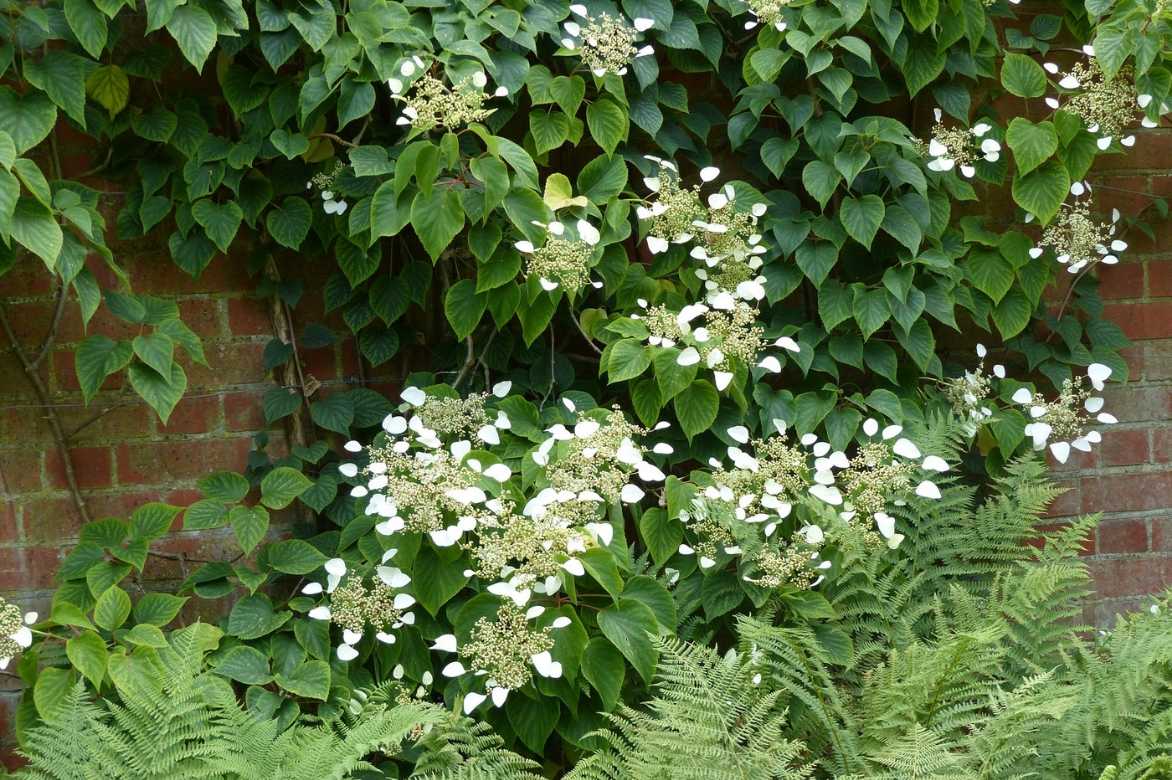
Planting in a pot:
As the volume of soil is inherently smaller in a pot than in the ground, plant growth is generally more limited. The size of the container is therefore important. The larger it is, the more nutrients and moisture the plant has access to. A pot of 50 cm in all dimensions is a minimum for a climber like Schizophragma. Ensure the pot has drainage holes so that water does not stagnate. Fresh soil does not mean waterlogged!
1. Soak the root ball so that it absorbs water evenly.
2. Make a mixture of heather soil (1/3) and rich potting soil (2/3). Once dry, peat is very difficult to rehydrate, and the Japanese climbing hydrangea needs moist soil. Add a handful of ground horn to nourish the plant over the long term.
3. Place a 5-centimetre layer of gravel at the bottom of the pot. Put a geotextile over the gravel to prevent the soil from mixing with this draining layer.
4. After optionally placing a stake in the pot (unnecessary if the plant is meant to climb a trellis, for example), place the root ball and fill in with the mixture.
5. Lightly compact. Remember to leave 2 to 3 cm between the surface of the substrate and the top of the pot. This way, you can easily mulch and water.
6. Orient the Schizophragma towards its support and secure (without strangling) the main branches using soft ties.
7. Water gradually until water runs out of the bottom of the pot.
8. Mulch to maintain moisture. Use organic mulches (bark, flax shavings…) or mineral ones (gravel, pebbles, slate petals…) depending on the style you have chosen.
Using a saucer ensures a water reserve for the plant in hot weather, but it should be removed during winter to keep the roots dry. However, the larger your pot, the heavier it is and the harder it is to handle. Additionally, you might damage the plant (attached to its support) during the operation. An alternative is to fill the saucer with clay balls before placing the pot inside. Even when the saucer is full of water, the roots remain dry, but evaporation creates a more humid and cooler atmosphere beneficial to the plant.
“`
Caring for Schizophragmas
During the beautiful season, if rainfall is scarce, water regularly, especially in the first few years. Once established, Schizophragma can withstand short periods of drought. Prefer a substantial watering each week rather than small daily waterings, except in pots where the substrate dries out more quickly.
In winter, natural rainfall is usually sufficient for the plant. Only intervene if necessary and always outside of severe frost periods, especially if the plant is in a pot.
Each spring, add compost and replace a good layer of mulch. Incorporate a handful of dried blood at the end of spring. This booster fertiliser stimulates flowering.
In pots, remove the mulch at the beginning of spring, also add compost or a rich potting mix supplemented with ground horn and replace the mulch. From May to August, water monthly with an appropriate fertiliser (follow the dosages indicated on the packaging) but never on dry substrate.
Pruning Schizophragma is not obligatory. It is not necessary in the first few years as its growth is slow.
If needed, intervene at the end of winter or the beginning of spring. Remove any dead wood and cut back misplaced or overly long stems to your liking.
Schizophragmas are resilient plants. Only slugs and aphids may attack the young foliage. Discover how to fight slugs naturally and how to identify and control aphids.
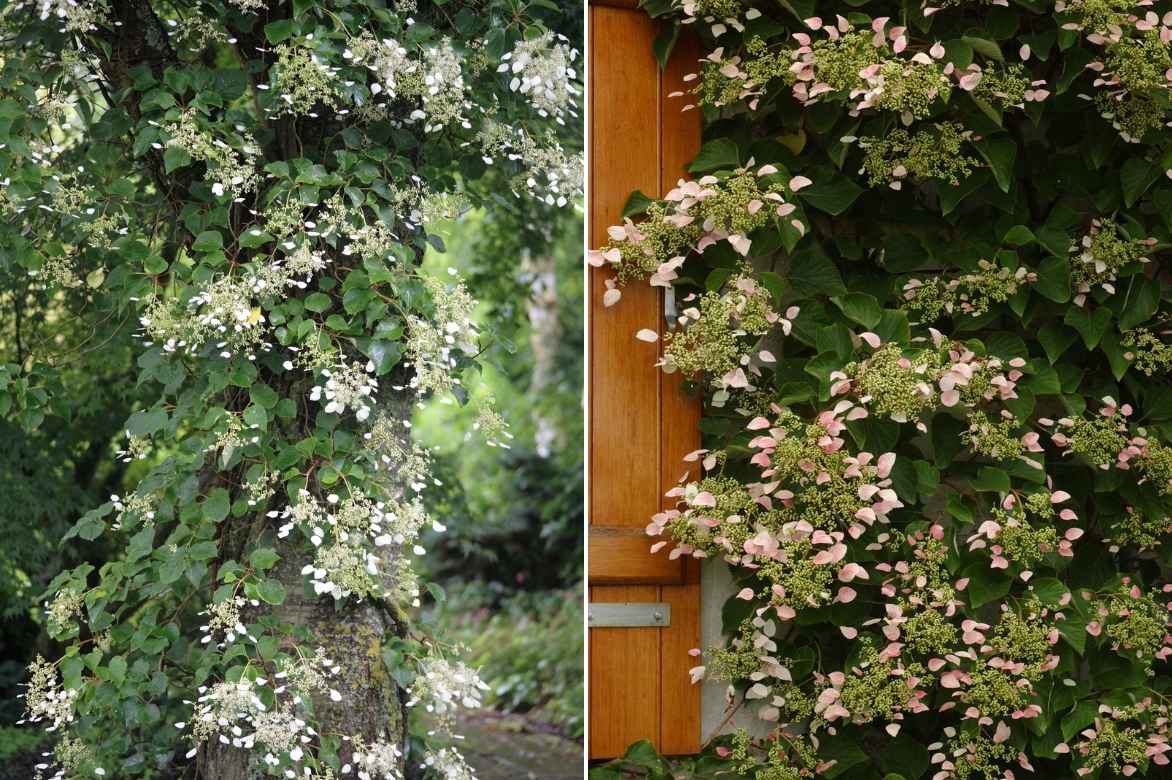
Multiplying Schizophragmas
The climbing False Hydrangea has a slow growth rate, especially during the first 2 to 3 years. If you wish to propagate it, wait until it is well established.
Propagation can be done by cuttings in summer or by layering.
Cutting of Schizophragma
Cutting is carried out in summer (between July and September)
- In a pot, make a mixture of equal parts of light potting soil combined with sand or finely shredded bark. The mixture should be well-draining but capable of retaining moisture.
- Choose a piece of semi-herbaceous stem (with a slightly firmer base and a softer top) about 6 to 10 cm long.
- Cut just below a node (the swelling where a stem inserts) using disinfected pruning shears.
- Prepare the cutting: remove all stems and leaves except for two at the top of the cutting. Cut the remaining leaves in half to limit evaporation.
- Using a knife or the blade of your pruning shears, slightly wound the base of the cutting. This involves removing only a very superficial layer of tissue, about 1 centimetre, without reaching the inner layers of the stem. Optionally, you can dip the base of your cutting in rooting hormone, sold in garden centres, often in powder form. Tap the cutting to remove excess powder.
- Make a pre-hole in your substrate using a pencil, for example, and insert your cutting until the leaves are level with the substrate, then water gently to avoid disturbing the cutting.
- Cover the potting soil with a small layer of gravel to help maintain moisture by limiting evaporation.
- Cut the top off a plastic water bottle and place it over the pot. This way, the cutting roots more quickly and easily. Just remember to remove it for a few minutes each day to aerate the setup.
- Place your cuttings outside in a bright spot but out of direct sunlight and regularly check that the potting soil remains moist but not waterlogged.
- The appearance of new leaves is a sign of rooting. Continue monitoring (occasional watering, aeration) and plant the cutting in the ground in the autumn of the following year.
Layering of Schizophragma
Layering is a process that sometimes occurs spontaneously in nature and can also be induced by the gardener. A part of the plant, in contact with the soil, will emit roots, giving rise to an independent subject.
Layering can be done all year round, but prefer March or autumn.
- Prepare the soil a few centimetres from the base of your Schizophragma. Turn the soil about thirty centimetres in all directions, removing stones and weeds. Add light, well-draining potting soil and mix it well with the original soil.
- Choose a stem less than 2 years old, growing close to the ground, flexible enough to be handled without breaking. It should be long enough to be laid on the ground for at least 60 cm.
- Keep the tip of the stem intact for 15 to 20 cm. Remove any leaves or branches from the middle, then, using a knife or the blade of disinfected pruning shears, slightly incise the bark for a few centimetres. Make the incision on the side of the stem that will be in contact with the soil.
- Make a small trench in the prepared soil, lay the stem down so that the incised section is in contact with the soil, then cover with a few centimetres of soil.
- Secure the layered stem using metal stakes or a sufficiently heavy stone.
- Gently raise the tip of the stem by tying it vertically to a stake planted in the ground.
- Water and regularly check that the substrate does not dry out.
- After a year, the layered section will have produced roots at the site of the incision. It is then time to sever it. Cut the branch a few centimetres before the new roots, gently remove your new plant and pot it to strengthen it a bit more or plant it directly in the ground.
Associate Schizophragmas with the garden
Climbing plant for light shade, Schizophragmas pair well with many trees that have sparse foliage, such as an old fruit tree with spring flowering, which thus becomes covered in flowers during summer.
In a bright situation, combine Schizophragmas with other flowering climbers like Akebia or a Clematis, or with lianas whose foliage ignites in autumn like Ampelopsis or Parthenocissus.
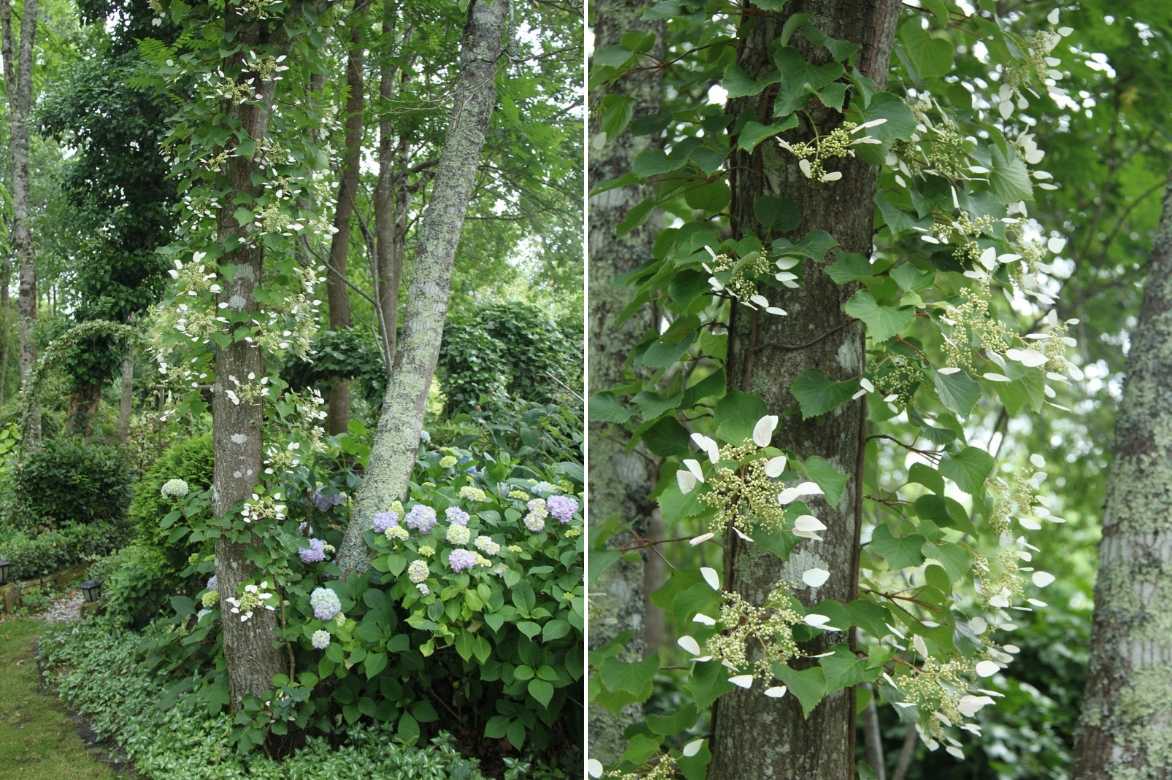
An example of an understorey association: a Schizophragma hydrangeoides climbing in a tree with a Hydrangea macrophylla at its base and a carpet of dead nettles as groundcover
Play with contrasts of shapes and textures using the foliage of ivies, some of which offer beautiful variegation.
In a mild climate, Berberidopsis flowers simultaneously in clusters of red bells.
Dress their base with hydrangeas whose inflorescences echo them. Hydrangea aspera ‘Hot Chocolate’ provides a beautiful contrast with its very dark foliage that turns golden in autumn.
Did you know?
The name Schizophragma comes from the ancient Greek ‘schizo’ (“to split”) and ‘phragma’ (“screen, barrier”). The origin of its name simply refers to the shape of its fruiting bodies. So, no need to worry! This beautiful liana will not split the wall it climbs on. Unlike other climbing plants, such as ivy for example, Schizophragma never damages its support.
Useful resources
Discover our range of Schizophragmas!
Other charming climbing hydrangeas.
Our selection of climbers for shade.
Frequently asked questions
-
Why isn't my Schizophragma climbing?
Schizophragma is slow to establish. For the first two or three years, it is necessary to stake it until it develops its climbing roots. After that, it becomes self-sufficient and clings to its support on its own.
-
Why doesn't my Schizophragma have any flowers?
Slow-growing, the Japanese climbing hydrangea may not start flowering until after 2 or 3 years. Be patient, as it will reward you with increasingly beautiful flowering each year.
-
La principale différence entre un Schizophragma et un Hortensia grimpant réside dans leur classification botanique et leurs caractéristiques. Le Schizophragma est un genre de plantes grimpantes de la famille des Hydrangeaceae, souvent connu pour ses feuilles en forme de cœur et ses fleurs en panicules. Il est moins commun que l'Hortensia grimpant et se distingue par sa croissance vigoureuse et sa capacité à s'accrocher aux supports grâce à des racines aériennes. L'Hortensia grimpant, quant à lui, est généralement une variété d'Hydrangea, également de la famille des Hydrangeaceae. Il est apprécié pour ses grandes fleurs en forme de boule et sa capacité à fleurir abondamment. L'Hortensia grimpant a tendance à avoir une croissance plus douce et peut nécessiter un soutien pour grimper. En résumé, bien que les deux appartiennent à la même famille, ils diffèrent par leur genre, leur apparence et leur mode de croissance.
Schizophragma and Hydrangea are climbing plants from the same family. Their needs and cultivation are similar. The difference is primarily botanical. While the small greenish-white flowers of Hydrangea petiolaris are surrounded by pseudo-flowers (sterile flowers) composed of four petaloids, Schizophragma features larger, solitary bracts that are elongated and tear-shaped, making the flowering more spectacular. The bracts of Schizophragma also retain a sharper appearance once dried, remaining decorative for a longer period.
- Subscribe!
- Contents
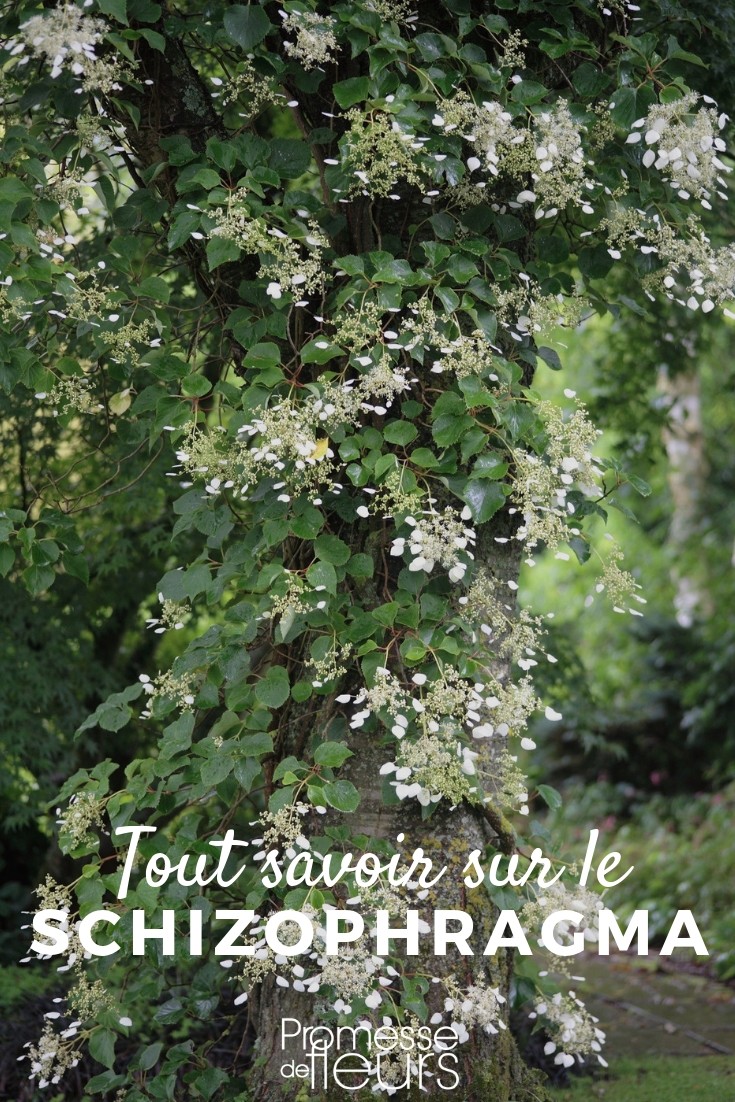































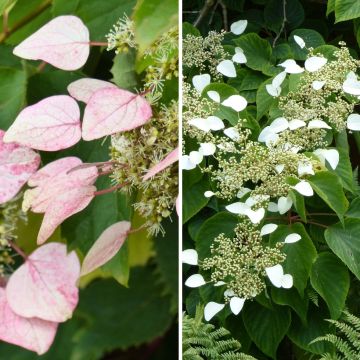



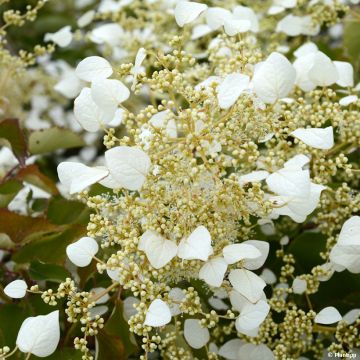





Comments